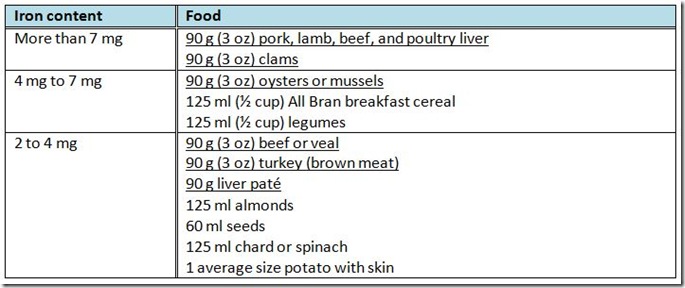
In general, the kind of anemia to which we refer is the one caused by iron deficiency. There are various symptoms of anemia: tiredness, paleness, headaches, loss of appetite, etc. Let’s see how an inadequate iron intake can cause problems to sports enthusiasts, and how to avoid this nutritional disorder!
How important is iron to athletes?
It is the iron contained in red blood cells that carries oxygen from the lungs to the organs, tissues, and muscles, allowing the production of energy. Therefore, iron deficiency in the nutrition of an athlete can give the impression of being low on fuel, and more tired. This can really compromise the intensity of workouts, as well as recovery capacity
Iron, where are you hiding?
The daily iron requirement for women between 19 and 50 is 18 mg, and 8 mg for women over 50. As for men over 19, they need 8 mg of iron on a daily basis. So now, where can we find this precious metal (inspired from the Clinical Nutrition Manual): 
Take note that iron from animal sources (underlined in the chart) is much better assimilated by the body than iron from plant sources.
In short, to ensure that you have enough iron, and thus, that you can perform at your maximum, make sure to do the following:
· Include iron from animal sources to each meal.
· Integrate one source of vitamin C to each meal, because it multiplies by 4 the absorption of iron. This vitamin is found mainly in raw coloured fruits and vegetables, as well as their juices.
· Avoid coffee or tea during meals, because the tannins they contain bind to iron, effectively preventing it from being absorbed by the body.
By Vanessa Martin
Athletic Anemia Under the Microscope is a post from Nautilus Plus. The Nautilus Plus blog aims to help people in their journey to fitness through articles on training, nutrition, motivation, exercise and healthy recipes.
Copyright © Nautilus Plus 2013

